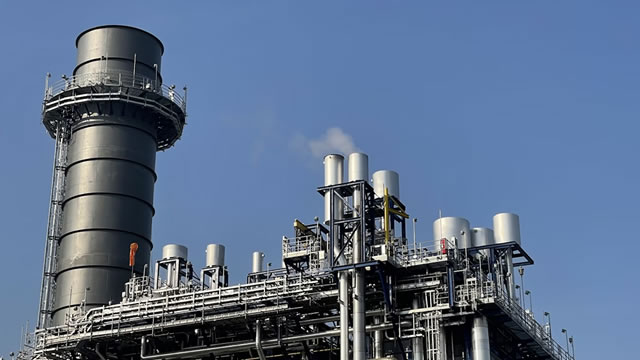Recent Developments in the Energy Market: WTI Crude Oil Surges Above $70 and Natural Gas Finds Support
The energy market has experienced some significant shifts in recent days, with WTI Crude Oil breaking above the resistance level of $70 and Natural Gas finding support. Let’s delve deeper into these developments.
WTI Crude Oil: A New Milestone
WTI Crude Oil, the benchmark for American crude, has reached a new milestone by surpassing the $70 per barrel mark. This price increase can be attributed to several factors, including:
- OPEC+ Production Cuts: The Organization of the Petroleum Exporting Countries (OPEC) and its allies, collectively known as OPEC+, have agreed to gradually reduce production in an effort to support prices. These cuts have been instrumental in reducing the global oil supply glut.
- Demand Recovery: The global economy is slowly recovering from the COVID-19 pandemic, which has led to an increase in demand for oil. This demand recovery, coupled with production cuts, has put upward pressure on oil prices.
- Geopolitical Tensions: Geopolitical tensions, particularly in the Middle East, have also contributed to the price increase. For instance, the ongoing conflict in Yemen and tensions between Iran and other Gulf states have created uncertainty in the oil market.
Natural Gas: Finding Support
Natural Gas, on the other hand, has found support despite the ongoing oversupply situation. Some factors contributing to this include:
- Cold Weather: Cold weather in various parts of the world, particularly in Europe and Asia, has led to increased demand for natural gas to meet heating needs.
- Storage Inventory Drawdowns: Natural gas storage inventories have been declining due to higher consumption and lower production, which has helped to support prices.
- LNG Exports: The United States, which is the world’s largest natural gas producer, has been ramping up its liquefied natural gas (LNG) exports. This has led to a decrease in domestic supply and put upward pressure on prices.
What Does This Mean for You?
If you’re a consumer, these developments in the energy market could mean higher energy bills. For instance, the increase in oil prices could lead to higher gasoline and diesel prices. Similarly, the increase in natural gas prices could lead to higher heating bills, especially for those in colder regions.
What Does This Mean for the World?
At a global level, these developments could have several implications:
- Higher Energy Prices: Higher oil and natural gas prices could lead to increased inflation and reduced economic growth, especially in developing countries that are heavily reliant on imported energy.
- Increased Focus on Renewable Energy: The high energy prices could accelerate the shift towards renewable energy sources, such as solar, wind, and hydroelectric power.
- Geopolitical Tensions: Higher energy prices could also lead to increased geopolitical tensions, particularly in regions where oil and natural gas are produced.
Conclusion
In conclusion, the recent developments in the energy market, with WTI Crude Oil breaking above the $70 per barrel mark and Natural Gas finding support, have significant implications for consumers and the world at large. While these developments could lead to increased energy prices and geopolitical tensions, they could also accelerate the shift towards renewable energy sources. As always, it’s important to stay informed about these developments and how they might impact you and the world around you.





